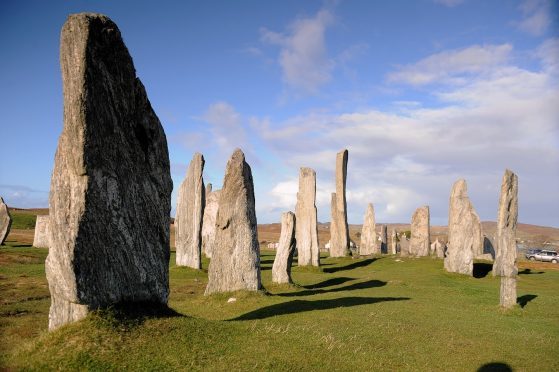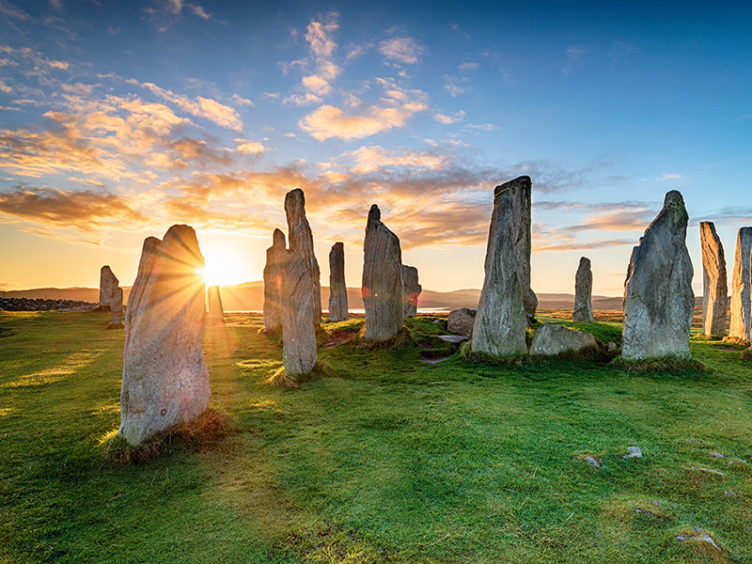A charge to view the Calanais Standing Stones is a step closer as Historic Environment Scotland (HES) plans a meeting with islanders.
Popular with Outlander fans, the stones are one of the biggest draws for tourists on the islands – and are free to view, for now.
Proposals being explored by the agency would see the introduction of a fee.
Any change to charging to access seeing the stones would need to be agreed by Scottish ministers.
A visitor centre, run by Urras nan Tursachan (UaT) at the Calanais Standing Stones is currently closed, as it prepares to upgrade its facilities, although it still has a presence on the site.
The standing stores are accessed from UAT’s car park.
Makers of Outlander said the mythical Craigh na Dun in the TV series was “inspired” by the Calanais Standing Stones, which has increased tourism to the island.
HES statistics show that the Calanais Standing Stones attract some 150,000 visitors a year – up from 45,000 in 2019.
Visitors to Lewis and Harris is predicted to rise further to 200,000 by 2025. This is due to a number of factors including an increase in the numbers arriving on cruise ships.
HES wants a portion of the revenue generated from introducing an entry fee will be reinvested to support heritage projects across the Outer Hebrides.
The agency is working with Urras nan Tursachan (UnT) in support of its plans to upgrade the visitor centre at the site.
Entry charge ‘would not apply to locals’
Proposals to introduce an entry charge would not apply to locals, with HES and UnT looking at options to create a system that “will allow the community to continue to enjoy their local heritage site”.
While final proposals are yet to be published by HES, formerly known as Historic Scotland, two meetings are being held to consult islanders on the plans.
Sian Evans, regional visitor and community manager for the north region at HES, said: “Calanais Standing Stones hold a special place in the heart of the community.
“As custodians of this important site, it is our responsibility to help ensure its sustainable management for generations to come.
“To achieve this, we are considering adjustments to access and charging arrangements.”
What are the Calanais Standing Stones?
The stones date from around 2900BC and would have been the place where people gathered to celebrate rituals.
Stonehenge are the Calanais stones’, younger sibling being built around 2500BC, some 400 years later.
The standing stones are also known by their English name of Callanish Standing Stones.
The proposals are set to be discussed at Breasclete Community Centre in the upstairs meeting room on Monday May 13 from 3.30pm-7pm and in Stornoway Town Hall on Tuesday May 14 from 2pm-5pm.


